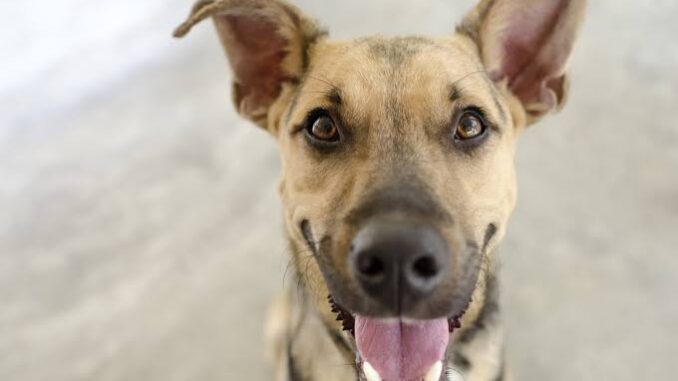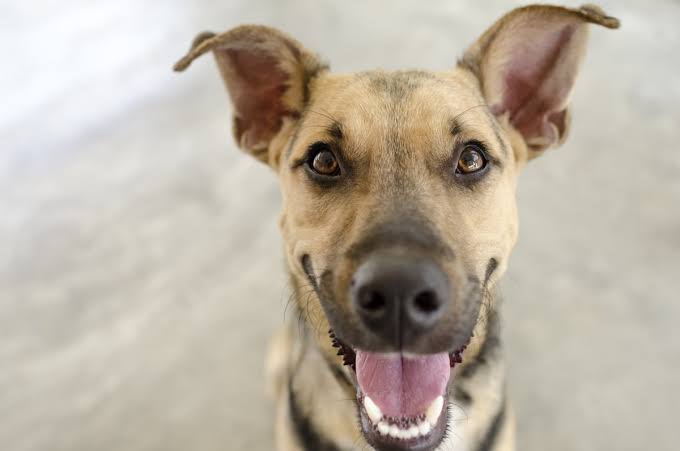
7 Signs Your Dog Is Happy and Healthy: Your dog may not speak your language, but they are constantly communicating with you through body language, behavior, and subtle signs. As a loving pet owner, understanding how to read these signs is essential for ensuring your dog is both happy and healthy.

This guide explores the 7 most important indicators of your dog’s overall well-being. Whether you’re a first-time dog owner or a seasoned dog lover, this insight will help you tune in to your dog’s needs more effectively.
7 Signs Your Dog Is Happy and Healthy
1. A Healthy Appetite (But Not Overeating)
A happy, healthy dog typically eats with enthusiasm and finishes meals consistently. While every dog has different eating patterns, there are red flags and positive signs to watch for.
Signs of Good Eating Habits:
- Eats meals at regular times without fuss
- Excited at mealtime but not obsessed with food
- Maintains a healthy weight based on breed and size
- Drinks a consistent amount of water
Red Flags:
- Sudden loss of appetite
- Overeating or constant begging
- Weight gain or loss
- Excessive water intake (can signal kidney issues or diabetes)
If your dog is eating well and maintaining a stable weight, it’s a great sign of both physical health and emotional contentment.
2. Bright Eyes, Clean Ears, and a Shiny Coat
Your dog’s external appearance is a mirror of their internal health.
Healthy Appearance Includes:
- Bright, clear eyes with no discharge
- Clean ears with no odor or excessive wax
- A shiny, soft coat (not dry or flaky)
- Normal shedding for the breed
These physical traits often reflect good nutrition, hydration, and grooming. A happy dog will also groom themselves and enjoy being brushed or cleaned by you.
Watch For:
- Red or irritated eyes
- Foul ear odor or shaking head frequently
- Bald spots or constant scratching
- Dry, brittle coat or excessive shedding
Regular grooming and vet checkups help catch these early, but their absence is a strong sign your dog is thriving.
3. Playfulness and Energy
A dog that frequently initiates play and shows bursts of energy is a happy dog. While energy levels vary based on age and breed, an alert and active demeanor is a reliable health indicator.
Good Energy Signs:
- Runs or walks with ease
- Excited to go outside or play with toys
- Enjoys games like fetch or tug
- Shows curiosity and interest in surroundings
Low Energy Concerns:
- Reluctance to go on walks
- Hiding or avoiding interaction
- Panting or limping after mild activity
- Sudden disinterest in play
Don’t confuse low energy with calmness—even mellow dogs should show enthusiasm when it’s time to engage.
4. Consistent, Healthy Elimination
A happy and healthy dog will eliminate regularly and without difficulty. Poop and pee are great windows into your pet’s digestive and urinary health.
Signs of Normal Bathroom Habits:
- Regular bowel movements (usually 1–3 times per day)
- Firm, well-formed stools
- No signs of discomfort when urinating or defecating
- Urine that’s pale yellow and clear
Abnormalities Include:
- Diarrhea, constipation, or vomiting
- Straining to urinate or defecate
- Bloody or very dark stool
- Peeing in unusual places suddenly
Consistency is key. A sudden change in elimination habits often signals dietary issues, parasites, or more serious conditions.
READ ALSO: The Mystery of the Tortoiseshell Cat: A Tale of Colors, Myths, and Meaning
5. Social and Affectionate Behavior
Emotionally, a happy dog is one that seeks interaction—not just with you but with the world.
Socially Happy Dogs Will:
- Wag their tail with a relaxed posture
- Follow you around the house
- Enjoy cuddles, petting, and attention
- Play well with other pets or people
Some dogs are naturally independent, but even introverted breeds should show signs of trust, comfort, and affection.
Emotional Distress Signs:
- Hiding, avoiding eye contact
- Growling or snapping without reason
- Excessive barking, whining, or pacing
- Tail tucking, crouching, or ears pinned back
Happy dogs seek connection, whether through play, snuggling, or simply sitting near you.
6. Regular, Restful Sleep
Dogs need plenty of sleep—between 12–18 hours a day depending on age and breed. A content dog sleeps deeply and wakes alert and ready to engage.
Signs of Healthy Sleep:
- Naps in comfy, quiet spots during the day
- Sleeps through the night without restlessness
- Wakes refreshed and eager
- Dreams occasionally (twitching paws or soft woofs)
Concerning Sleep Patterns:
- Restless pacing at night
- Difficulty settling down
- Sleeping far more or less than usual
- Loud snoring, which can indicate breathing issues
Changes in sleep can reflect both emotional stress or physical pain, so monitor shifts closely.
7. Willingness to Learn and Engage
Mentally healthy dogs are curious and willing to learn, explore, and follow basic cues.
Signs of Mental Stimulation and Happiness:
- Responds to commands and cues
- Likes learning new tricks or puzzles
- Shows excitement during training
- Explores new environments with confidence
A happy dog seeks challenges—puzzle toys, games, or training sessions keep their mind sharp.
Warning Signs:
- Disinterest in training
- Easily frustrated or reactive
- Forgetting known commands
- Obsessive behaviors like tail chasing or paw licking
Engagement shows not just happiness, but mental clarity and cognitive health—a vital but often overlooked aspect of well-being.
FAQs
My dog is sleeping more than usual—should I worry?
Possibly. While dogs do sleep a lot, a sudden increase in sleepiness or lethargy can indicate illness, pain, or boredom. Rule out age-related changes and consult your vet if it persists.
Can dogs get depressed?
Yes. Dogs can experience depression from loss, change, or lack of stimulation. Signs include withdrawal, reduced appetite, and lack of interest in play. Extra attention and enrichment often help, but a vet visit may be needed.
Is tail wagging always a sign of happiness?
Not always. While a loose, wagging tail usually signals joy, a stiff or fast wag—especially when combined with other tense body signals—can indicate stress or overstimulation.
What’s the best way to boost my dog’s happiness?
Dogs thrive on routine, enrichment, exercise, and affection. Regular walks, playtime, mental stimulation (puzzles, training), and lots of love go a long way.
How often should I take my dog to the vet for a check-up?
At least once a year for healthy adult dogs. Puppies, seniors, or dogs with medical conditions may require more frequent visits.
How do I know if my dog is in pain?
Subtle signs include limping, excessive licking of a body part, changes in behavior, whining, or avoiding stairs. Trust your instincts if something seems off, consult a vet.
What are signs of anxiety in dogs?
Common anxiety symptoms include pacing, whining, destructive behavior, panting, or hiding. Separation anxiety and noise sensitivity are especially common.
Leave a Reply
You must be logged in to post a comment.